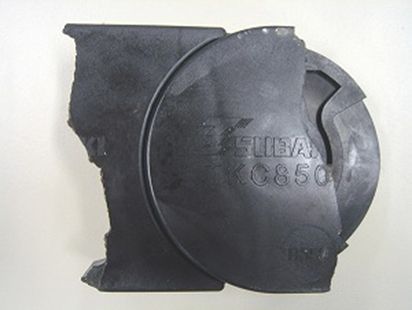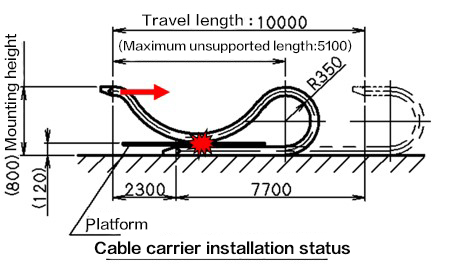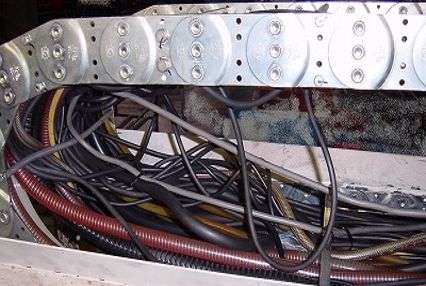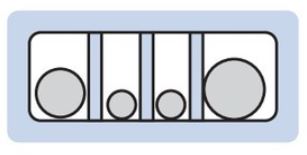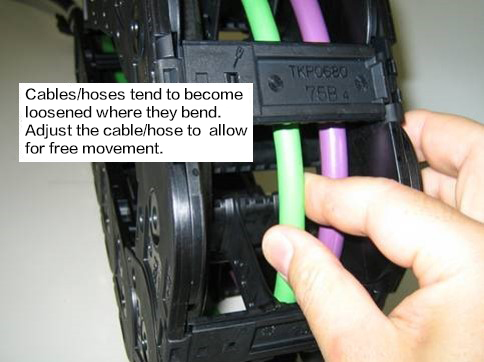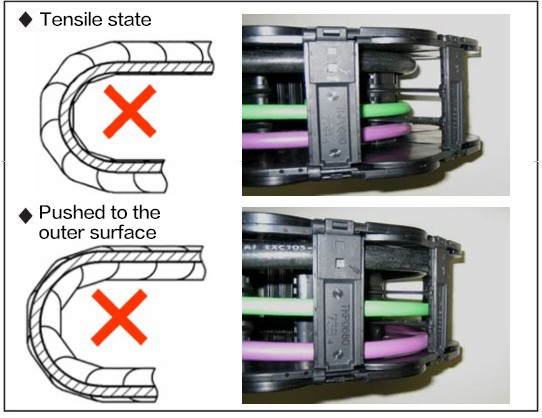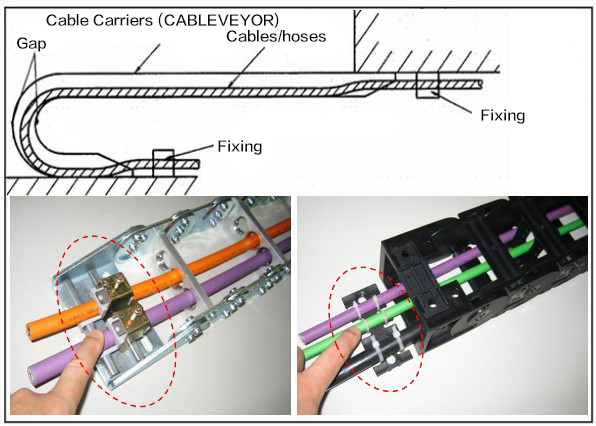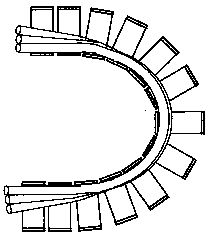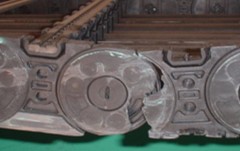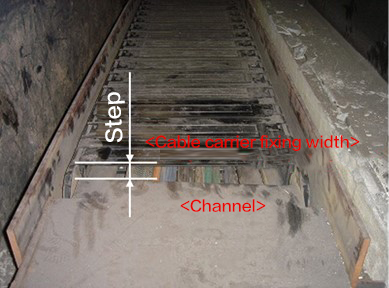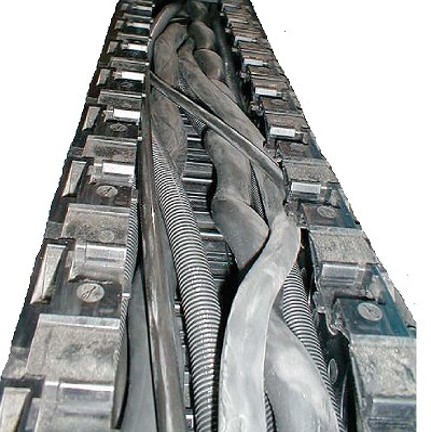Troubleshooting Cable Carriers (CABLEVEYOR)
| 1 | Base chain link damaged |
|---|---|
| 2 | Cable disconnected |
| 3 | Gliding arrangement base chain link damaged |
| 4 | Cables/hoses are twisted and entangled inside the cable carrier |

| 1 |
|---|
| Cause 1 |
Due to the sag at the unsupported length section, an excessive impact force acted under the influence of (1) and (2).
|
Solution |
※Click here for applicable models. |
|---|---|---|---|
| Cause 2 | It reached the endurance life with operation. | Solution | Compare with the unsupported length sag limits (guideline), and replace with a new one if the limit value has been reached. |
| 2 |
|---|
| Cause 1 | Cables/hoses protruded into the inner and outer circumference of cable carrier and interfered with peripheral equipment. | Solution | |
|---|---|---|---|
| Cause 2 |
Cables/hoses on the inner circumference side were crushed and excessive compressive force was repeatedly applied. |
||
| Cause 3 | The load was applied because the bend radius of cable carrier was smaller than the allowable bending radius of cables/hoses. | Solution | Make the bending radius of cable carrier larger than the allowable bending radius of cables/hoses. |
| 3 |
|---|
| Cause 1 |
There was a large step at the joint between the channel on which the inner peripheral surface of cable carrier slides and the fixed end link of cable carrier. This enlarged the sliding friction when transferring from the channel to the fixed end link. |
Solution |
Eliminate a step between guide channel and cable carrier. See the instruction manuals for details. |
|---|---|---|---|
| Cause 2 |
The mounting height of moving end of cable carrier was higher than our recommended value. This caused excessive bending moment in the unsupported length section. |
Solution | Set the mounting height within our recommended value. |
| Cause 3 | Sliding friction increased due to dust accumulated on sliding surface of cable carrier. | Solution |
Avoid accumulation of dust.
|
| 4 | Cables/hoses are twisted and entangled inside the cable carrier |
|---|
| Cause 1 |
Cables/hoses were not separated using dividers. |
Solution | Install dividers and lay out cables/hoses as much as possible to be one piece per space. |
|---|---|---|---|
| Cause 2 | Because the cable for movement is not used, the core wire becomes unstranded, and the cable is in a meandering state. | Solution | Use highly flexible cables/hoses for movement offering excellent flexibility and durability over continuous operation. |
